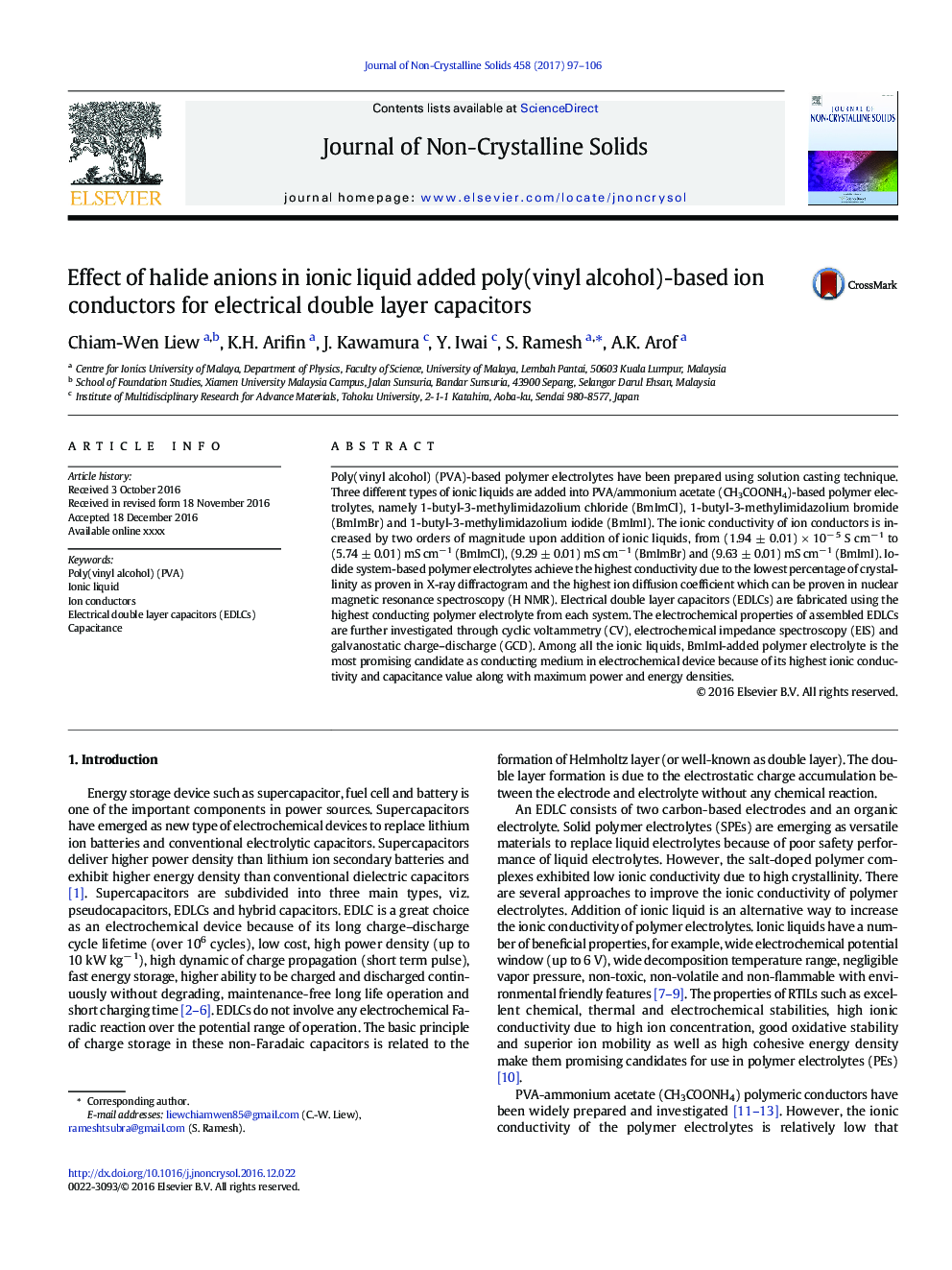| Article ID | Journal | Published Year | Pages | File Type |
|---|---|---|---|---|
| 5441410 | Journal of Non-Crystalline Solids | 2017 | 10 Pages |
Abstract
Poly(vinyl alcohol) (PVA)-based polymer electrolytes have been prepared using solution casting technique. Three different types of ionic liquids are added into PVA/ammonium acetate (CH3COONH4)-based polymer electrolytes, namely 1-butyl-3-methylimidazolium chloride (BmImCl), 1-butyl-3-methylimidazolium bromide (BmImBr) and 1-butyl-3-methylimidazolium iodide (BmImI). The ionic conductivity of ion conductors is increased by two orders of magnitude upon addition of ionic liquids, from (1.94 ± 0.01) Ã 10â 5 S cmâ 1 to (5.74 ± 0.01) mS cmâ 1 (BmImCl), (9.29 ± 0.01) mS cmâ 1 (BmImBr) and (9.63 ± 0.01) mS cmâ 1 (BmImI). Iodide system-based polymer electrolytes achieve the highest conductivity due to the lowest percentage of crystallinity as proven in X-ray diffractogram and the highest ion diffusion coefficient which can be proven in nuclear magnetic resonance spectroscopy (H NMR). Electrical double layer capacitors (EDLCs) are fabricated using the highest conducting polymer electrolyte from each system. The electrochemical properties of assembled EDLCs are further investigated through cyclic voltammetry (CV), electrochemical impedance spectroscopy (EIS) and galvanostatic charge-discharge (GCD). Among all the ionic liquids, BmImI-added polymer electrolyte is the most promising candidate as conducting medium in electrochemical device because of its highest ionic conductivity and capacitance value along with maximum power and energy densities.
Related Topics
Physical Sciences and Engineering
Materials Science
Ceramics and Composites
Authors
Chiam-Wen Liew, K.H. Arifin, J. Kawamura, Y. Iwai, S. Ramesh, A.K. Arof,
